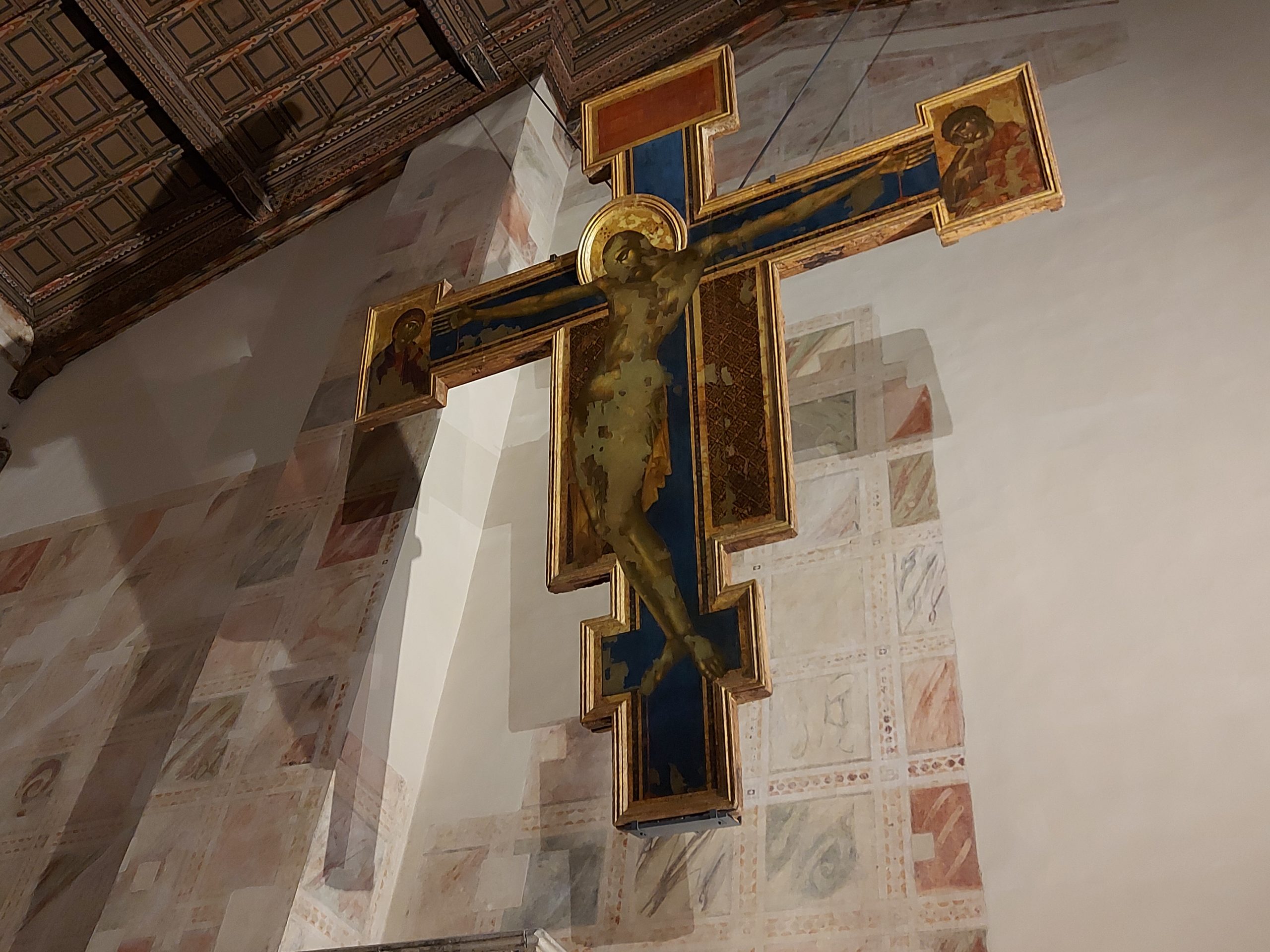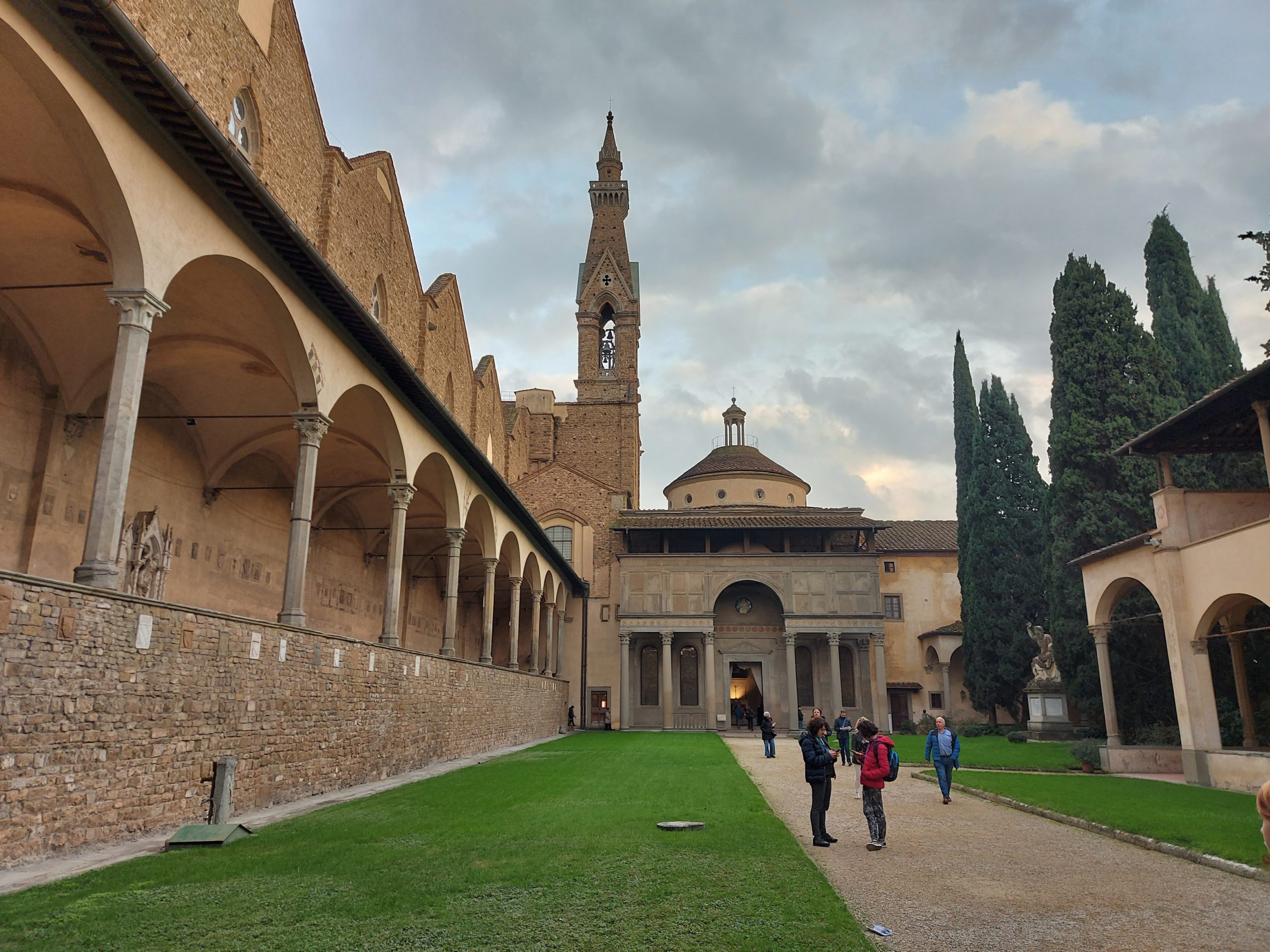The burial ground of genius : Florence’s Santa Croce Basilica
The Basilica of Santa Croce is a must-see destination when you are visiting Florence.
Groundbreaking for this church began in 1295, and work was completed in 1385. The church is an artistic gem – with work by Cimabue and Giotto.
But the real reason to visit this basilica is its fame as the burial ground for genius. Some of the greatest minds from philosophy, art, music, science and literature are entombed in Santa Croce.

Giochino Rossini is one of the tombs that can be viewed at Santa Croce. Rossini (1792-1868) was an Italian composer, famous for his thirty-nine operas.
Perhaps his most famous is The Barber of Seville. Although Rossini died in Paris and was originally buried in the famed Père Lachaise cemetery, his remains would be moved to Florence in 1887.
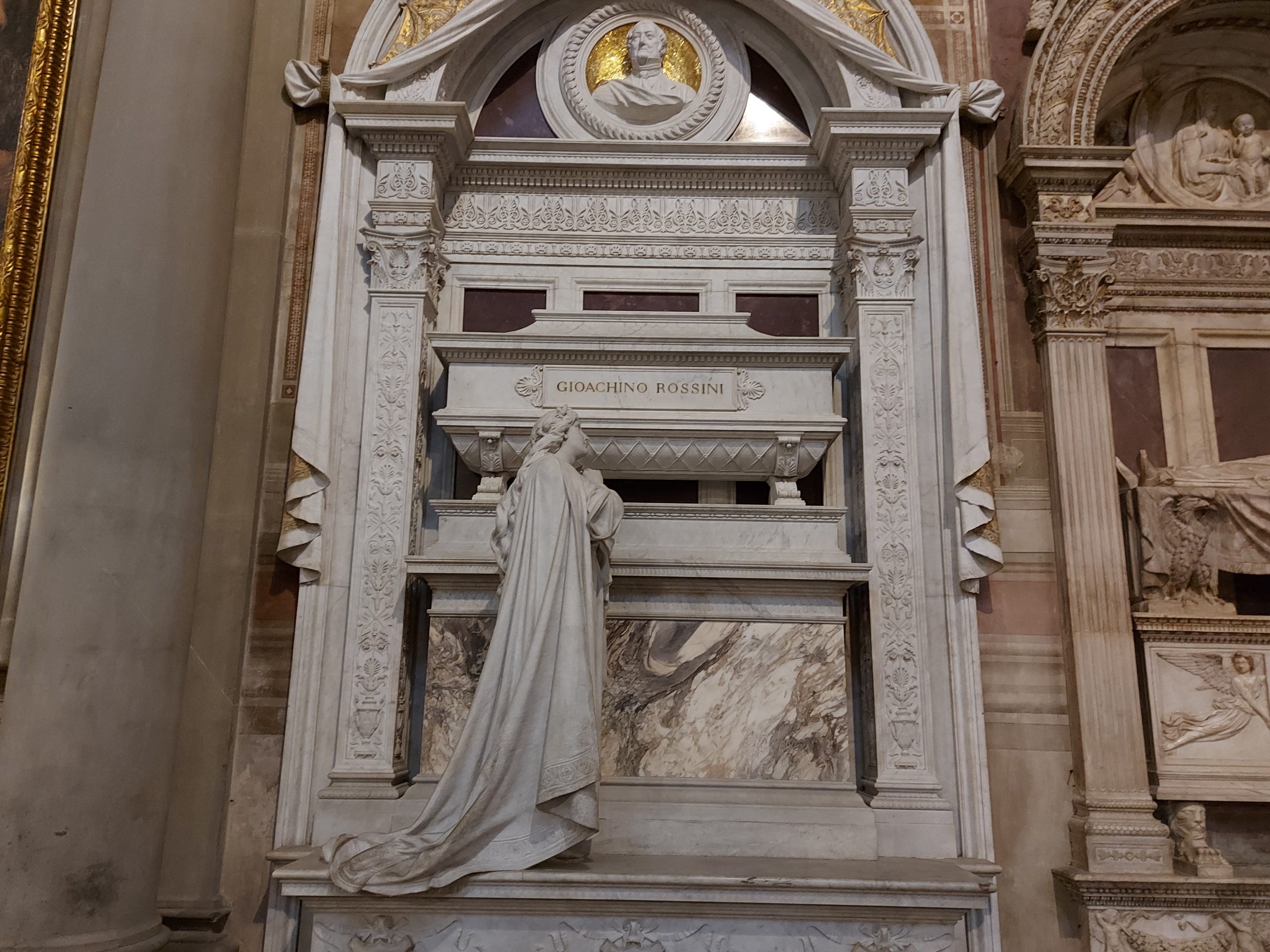 Interestingly, native son Dante Alighieri (1265-1321) also has a memorial at Santa Croce, even if he is not buried here. The Father of the Italian language was banished from his hometown and is buried in Ravenna.
Interestingly, native son Dante Alighieri (1265-1321) also has a memorial at Santa Croce, even if he is not buried here. The Father of the Italian language was banished from his hometown and is buried in Ravenna.
You can read my blog post about Dante’s resting place, and the underhanded efforts Florentines undertook to try to retrieve the poet’s body.
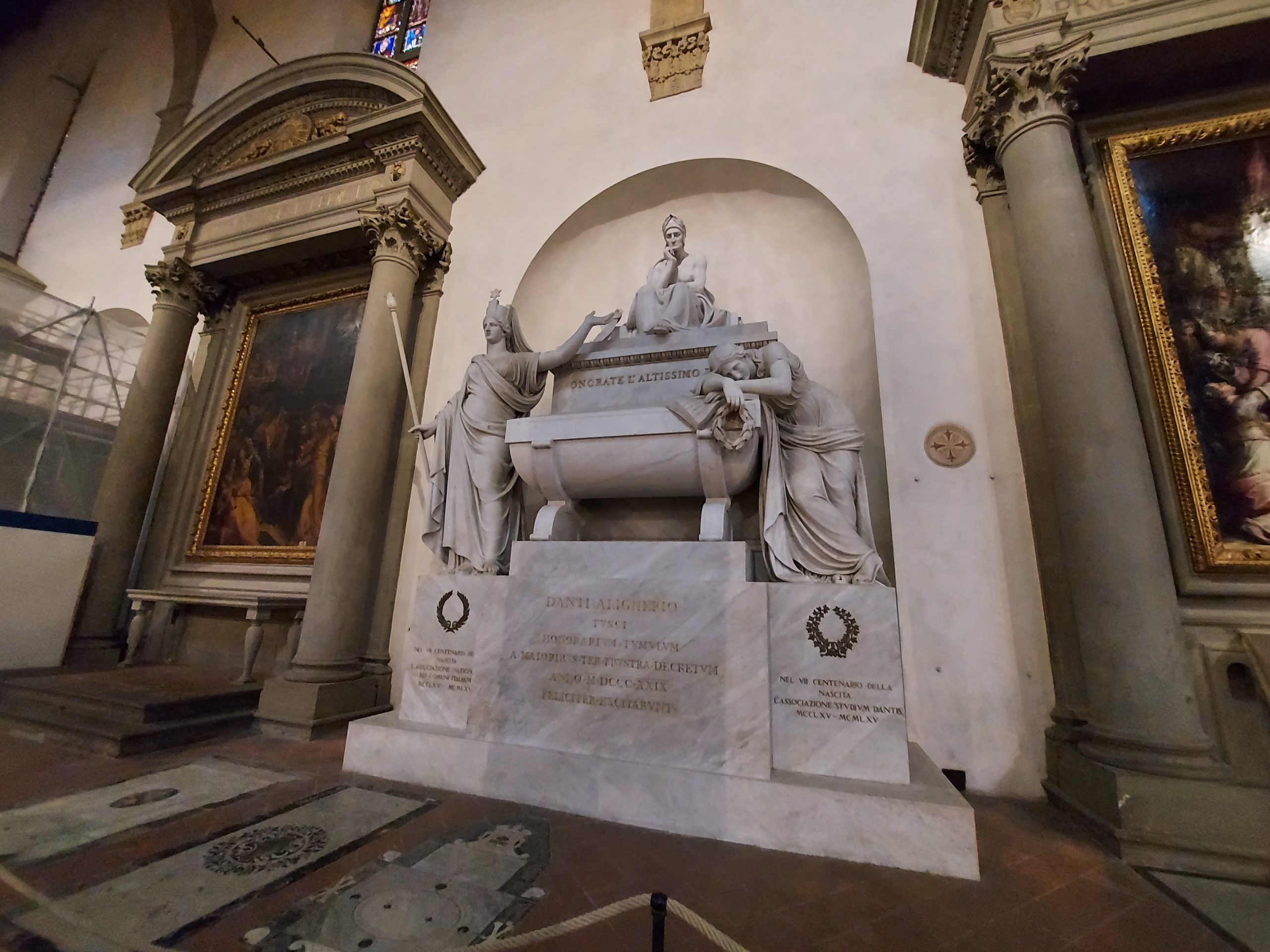 The great Florentine political philosopher, Niccolò Machiavelli (1469-1527), is also buried here.
The great Florentine political philosopher, Niccolò Machiavelli (1469-1527), is also buried here.
Machiavelli is today recognized as the Father of Political Philosophy and Political Science, and is best known for his (brilliant) work, The Prince.
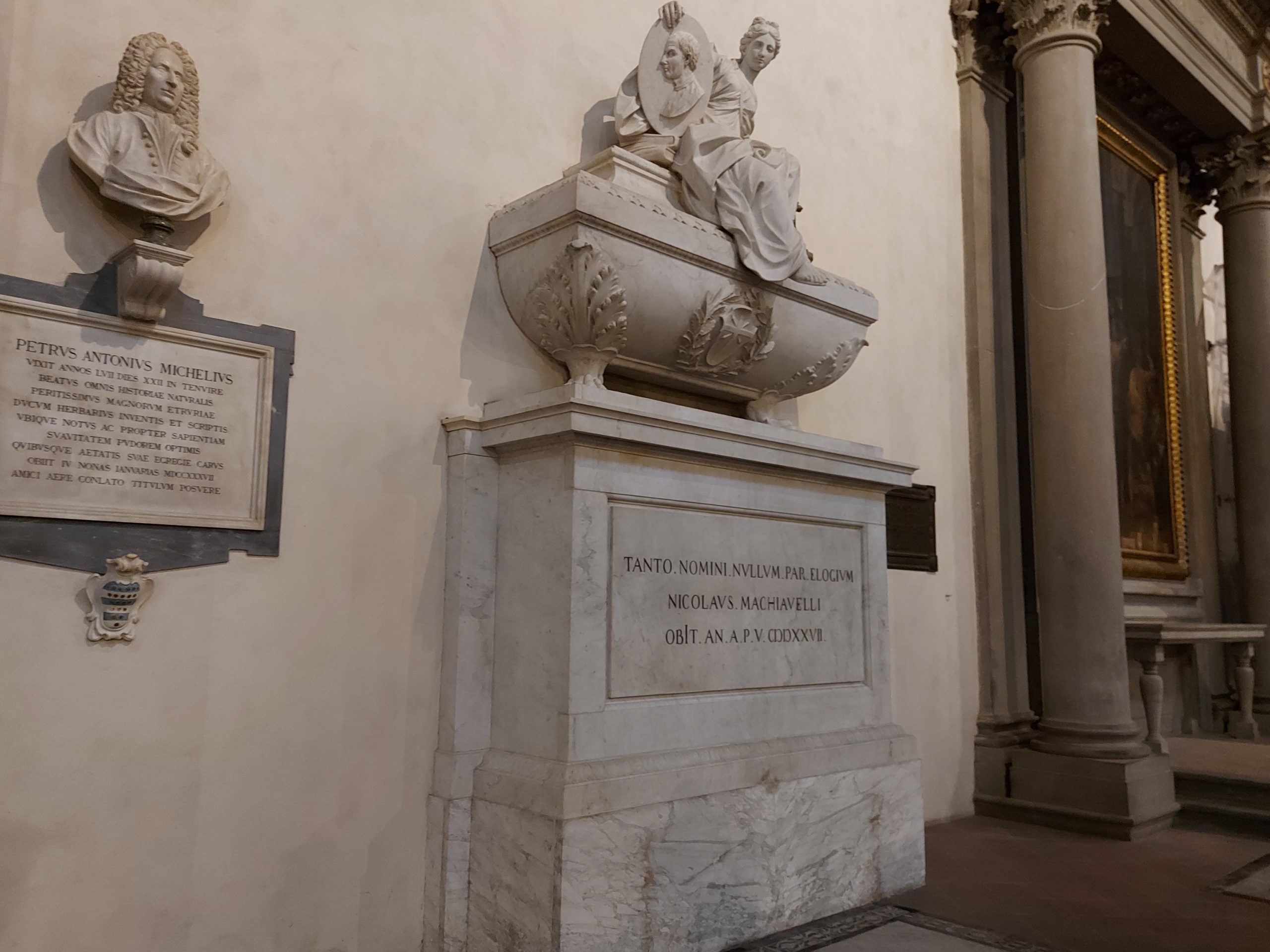 The Florentine artist Cimabue (1240-1302) is not buried here, but the church does house his incredible Crucifixtion, believed to have been created in 1276.
The Florentine artist Cimabue (1240-1302) is not buried here, but the church does house his incredible Crucifixtion, believed to have been created in 1276.
The medieval artwork was badly damaged in the flooding of the Arno River in 1966.
There are also a series of Giotto frescoes, unfortunately, currently under renovation.
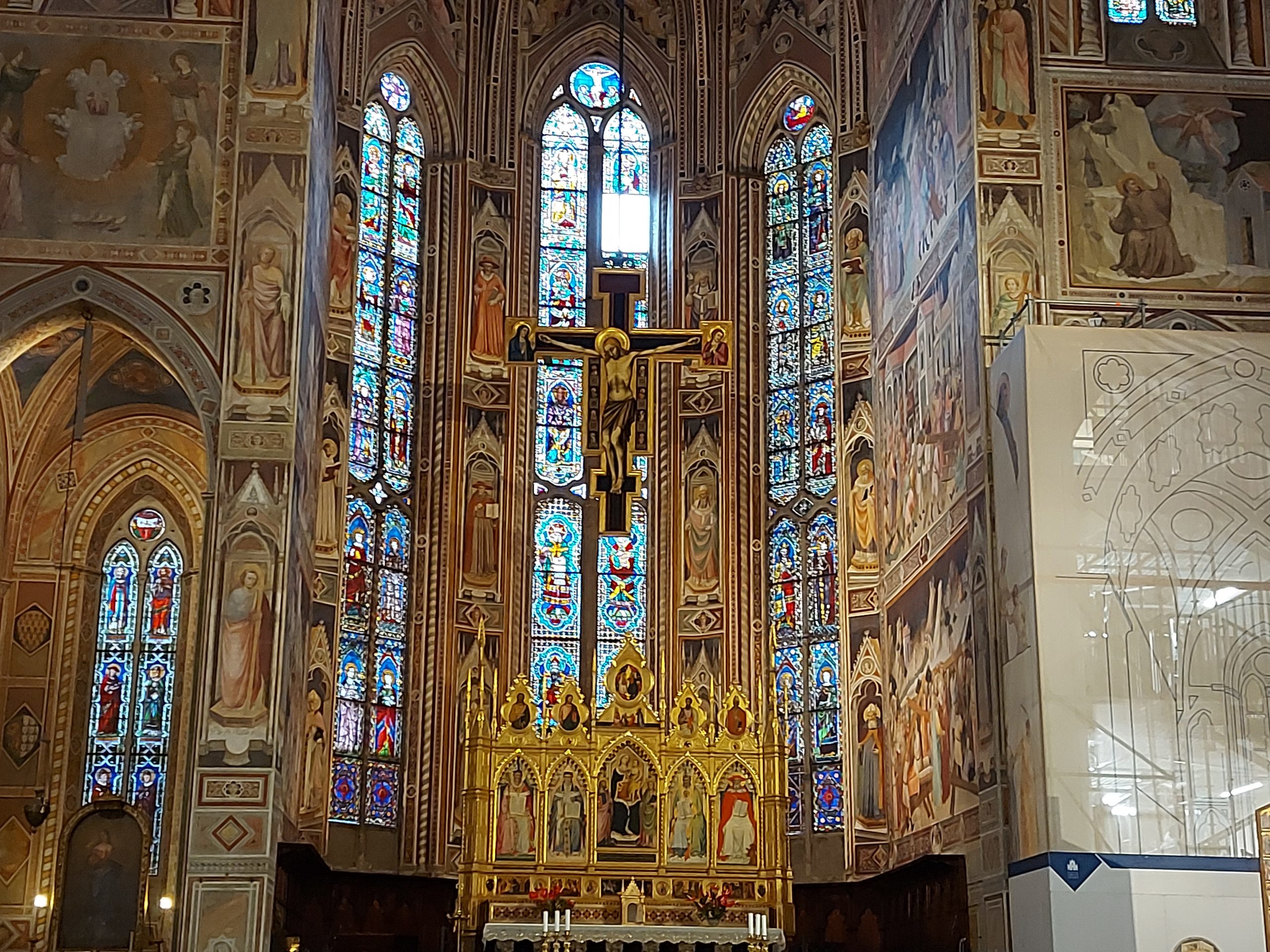 Another brilliant mind buried here is scientist-astronomer Galileo Galilei (1564-1642). Galileo was born in Pisa, which was, at the time, within the Duchy of Florence.
Another brilliant mind buried here is scientist-astronomer Galileo Galilei (1564-1642). Galileo was born in Pisa, which was, at the time, within the Duchy of Florence.
Galilieo’s heliocentric theory – placing the sun, rather than the Earth, at the center of the solar system – put him in direct opposition to the church. In 1616, The Roman Inquisition declared heliocentism “foolish and absurd in philosophy, and formally heretical since it explicitly contradicts in many places the sense of Holy Scripture.”
A 1632 trial called him to Rome to defend his writings, nut he would be condemned and forced to spend his final years under house arrest.
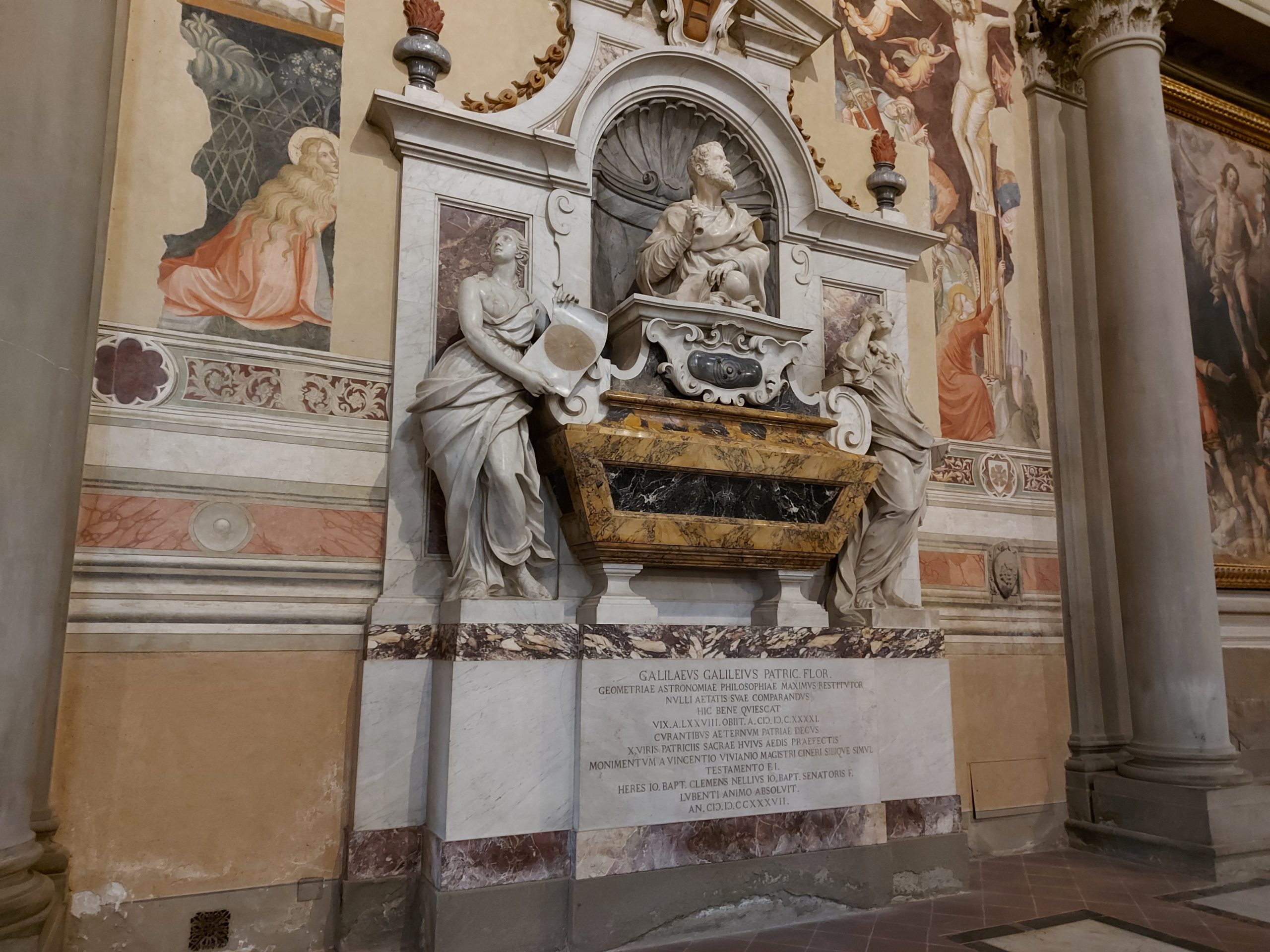 I have been many times to Santa Croce, and hope to return many more.
I have been many times to Santa Croce, and hope to return many more.
I am not sure that brushing with so much genius allows any to rub off on me, but a girl can hope…
